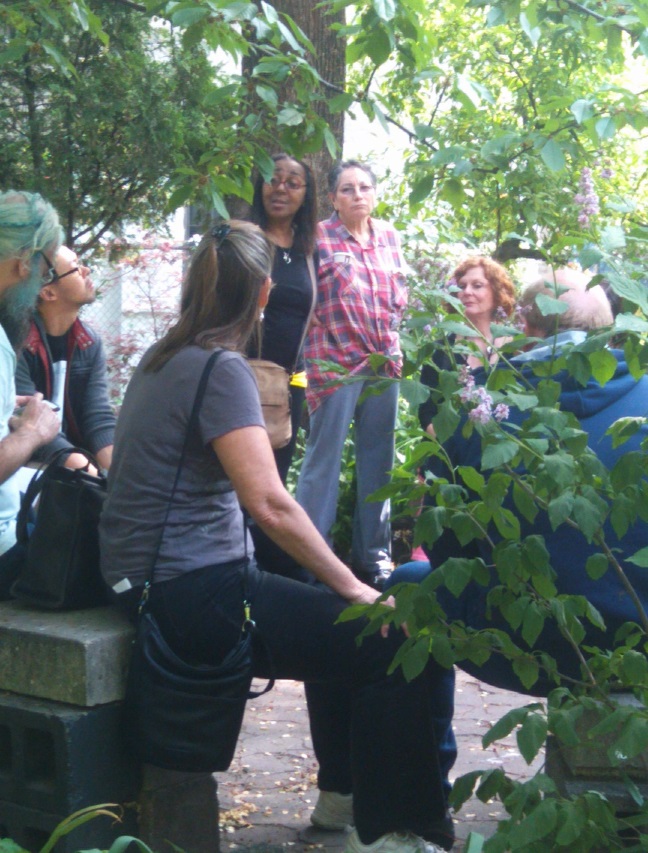Ayo Harrington Oral History: Protecting Our Community Gardens
As spring unfolds, our neighborhoods’ many green spaces become even more enticing. For some, it’s trips to our parks to lay out on the grass; for others, volunteering at one of the many community gardens that dot our streets. Regardless of your preference, having these green spaces available helps make our community vibrant and livable. There have been many trailblazers in the history of establishing these natural getaways. Today, we’re highlighting one East Village icon who knows deeply the importance of our community gardens, regardless of the season.

In August 2020, Village Preservation conducted an oral history with Ayo Harrington. Various topics were covered, many of which surrounded her work in community gardens, urban homesteading, environmental resilience, educational equality, and civil rights movements. Spending most of her youth in Suffolk, Connecticut, Ayo moved to the East Village in the 1960s as a teenager. Upon her arrival, she lived with her older sister, who was active in the radical Black organizing happening at the time. Following her sister’s footsteps, Ayo became a volunteer and organizer for the Student Nonviolent Coordinating Committee, later attending the Malcolm X Liberation University in North Carolina. Reflecting on her education within Black radical spaces, Ayo credits this experience as key to her work in social justice.

Ayo was a critical supporter and organizer for the use of abandoned buildings as housing and homesteading. Completing her own homesteading project in Alphabet City, Ayo translated this experience into advocating for land trusts. In addition to this advocacy, Ayo also supported the creation of community gardens on abandoned lots, specifically the Orchard Alley Community Garden.
Reflecting on the history of Orchard Alley, Ayo provides a fascinating insight into the many obstacles some community gardens faced then, and still do today. Starting as a way to redevelop and reuse four lots between East 4th and East 3rd Street, the original concept was to establish an orchard. This decision was rooted in Ayo’s dedication to social justice and close understanding of the underlying politics of community garden spaces. To prevent established ownership of the space and to ensure diversity amongst garden visitors or volunteers, the Orchard Alley Community Garden was established.

One significant challenge faced by Orchard Alley and other community gardens is the issue of ownership and permanence. In the earliest years of Orchard Alley, Ayo recalls the murky process in which the ownership of the land was purposely kept obscure. After Orchard Alley had already been operating for fifteen years, Ayo and her team would have to battle in court for a suddenly reacquired section of the garden. Confusing and inaccessible ownership policies almost threatened the entire stretch of the garden, but eventually, Orchard Alley emerged victorious.

As noted by Ayo, however, many gardens still face risks similar to this story. Community gardens, operating on land owned by the City of New York, fall within an unstable four-year cycle in which gardens must sign a new licensing agreement acknowledging the possibility of sudden acquisition. Ayo has advocated for establishing these gardens as parkland to ensure their longevity and permanence within our community.
As the summer months approach, spaces such as these act as crucial natural landscapes to provide shade, comfort, and fresh air. Particularly important is ensuring access to these spaces long-term for lower income residents, who have access to fewer other recreational and green space options. It’s also a way of ensuring that marginalized groups, especially those who may be in the process of being pushed out by gentrification, like black and Latino New Yorkers, maintain a place in the community.
You can learn more about Ayo Harrington and listen to or read her oral history here. Learn more about the many community gardens that exist in the East Village and beyond here.
